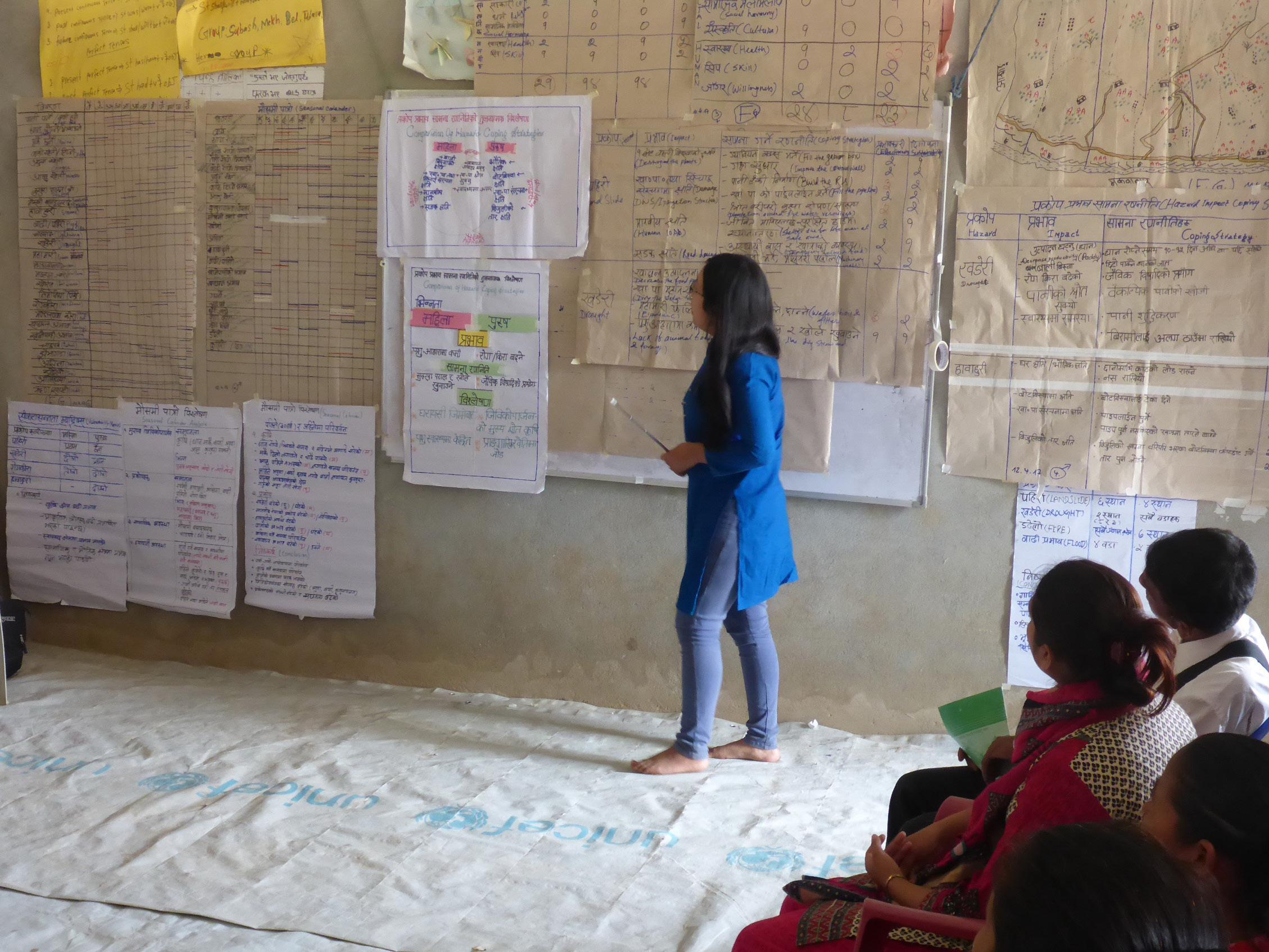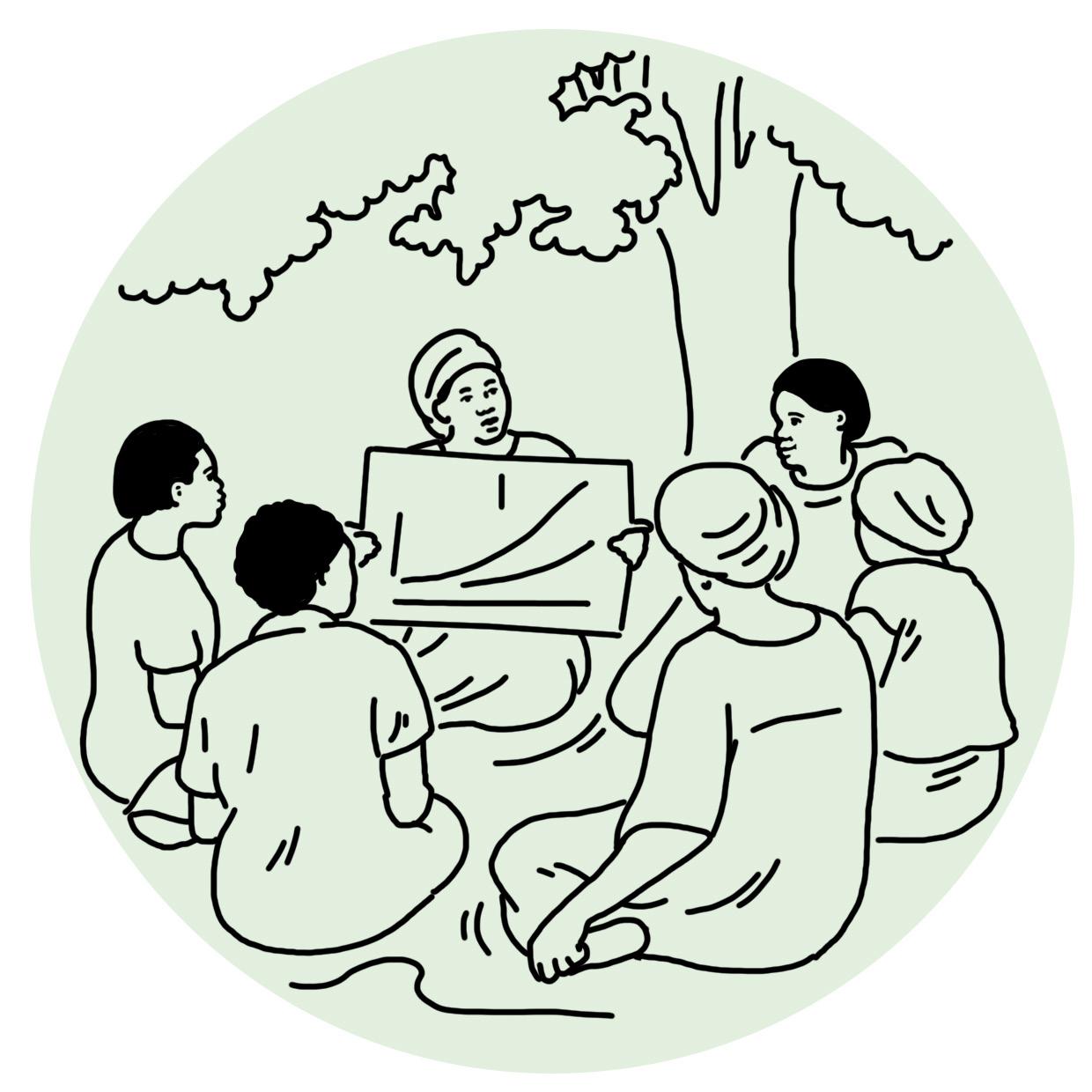
3 minute read
Summary: Review and conclusions
In this summary, the facilitation team presents the results from Exercises 1–5, and together with the participants draws conclusions about the assessment phase of the tool. The remaining modules will focus on planning and the actions to take in the future. The objectives of this summary are to:
Ensure that everyone shares the same understanding of the process so far
Ensure a common understanding and clear view of the main results
Prepare participants for the next three modules
Facilitation
Facilitators prepare a blank hazard-response-action table in advance of their presentation (see sample table), and have on hand the hazard maps, seasonal calendars, the vulnerability matrix and the responses to impacts matrix developed in previous exercises. This review of previous exercises is done with all the participants in one group.
The hazard-response-action table provides a framework for summarizing the results of Exercises 1–5, and for displaying the relationships among the hazards, impacts and responses. The vulnerability matrix identifies the main hazards of concern, and facilitators list these hazards in the first column of the blank hazard-response-action table. Facilitators then suggest rankings for the severity of impacts based on the prioritization of hazards in Exercise 3 and the vulnerability matrix in Exercise 4, using the same scale as in Exercise 5:
+++ = Very high ++ = High + = Medium 0 = Not effective or not sustainable
Bearing in mind the impact of hazards on livelihood resources, the participants verify that the rankings are consistent with their views. The idea is to condense what the participants decided in the previous exercises, not create new rankings. The facilitators record the rankings in the second column of the table.
For each of the hazards in the first column, facilitators summarize the strengths of the local responses in one ranking per hazard using the same scale as above. When the participants confirm the strength-of-response rankings, the facilitators record the rankings in the third column.
This summary of progress so far has proven useful in keeping everyone on board in previous community applications of the tool.
Plan 45-60 minutes for preparation and 2 hours for presentation and discussion. Participants determine the need for action in light of the strength of the impacts and responses. Here particular local challenges may enter the considerations. A controversial large-scale development or land conflicts or other local concerns may warrant special attention. Participants use the same scale as above for their rankings, and facilitators record the rankings in the fourth column.
Sample Hazard-response-action table
Hazard
Drought Flood Heatwaves SEVERITY OF IMPACT
STRENGTH OF EXISTING RESPONSES NEED FOR ACTION
At the end of this review and determination of the need for action, participants should have a clear view of those local responses that are effective and sustainable and can be done more widely or intensively, and of those where a better response is needed. The conclusions reached by the participants while discussing the rankings are likely to strengthen a shared understanding of the different vulnerabilities and the need to be sensitive to gender issues and to particularly vulnerable groups. The discussion leading to agreement on the rankings may provide indications for why some actions are difficult, and may identify some obstacles to overcome.
The compilation of the results from Modules 2–4 can stand alone as a community climate and disaster risk assessment report that can inform other, ongoing community processes and large-scale assessments.

Tea break, Nepal Review of assessment results, Nepal

Module 5: Adaptation strategies
Identification of additional responses to cope with climate hazards and impacts

In Module 5, participants use the results of the assessments in the previous modules to set adaptation goals and identify suitable strategies for the community. The module connects global trends and climate change scenarios to the local situation.
Facilitators or other resource persons begin Module 5 with a presentation on climate change causes and scenarios, global and regional impacts and worldwide actions taken in response to the consequences of climate change. The exercises that follow are conducted in separate groups of men and women, and if minorities are involved another separate session is also a good idea.









